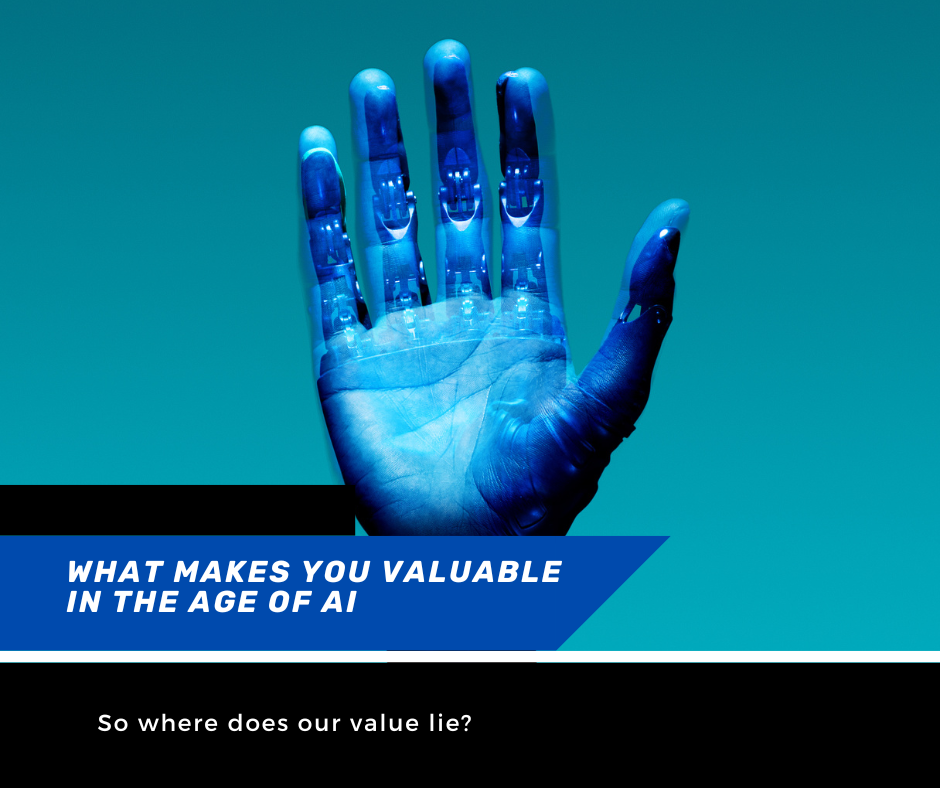I am currently dealing with some personal stuff and am lucky enough to have business owner friends who will guest blog in circumstances like this and help me stay relevant in the algorithm.
And well AI is a tool that I have been struggling to find my relationship with lately but my friend and fellow digital marketing professional Jennifer Andrews volunteered to stop up and chat about how to recognize your value in the age of AI.
I’ll let Jennifer take it from here.
Unless you’ve been living under a rock (which, honestly, sounds quite cool and comforting in this heat), you’re probably aware of the rapidly growing capabilities of AI. Depending on your outlook, you’re either eagerly exploring how it can support your work - or quietly wondering if it might one day replace you.
As someone deeply entrenched in the digital world, AI has certainly crept into my area of expertise. But can it really do what we do as well as we do it?
The honest answer is: not yet. But the gap is closing. AI is improving rapidly. It can crank out content, generate a generic plug-and-play strategy, and even mimic a successful brand’s tone of voice. It gets the job done quickly, affordably, and with just enough polish to seem impressive at first glance.
But what AI sill lacks and what continues to give humans a clear edge is our real-world experience and intuition.
AI draws only from existing data. It doesn’t live in a community. It doesn’t walk into a local business and sense that something’s off. It doesn’t have coffee with a client who’s burned out, or pick up on the tension in a meeting that signals a shift in messaging. It can’t feel nuance.
Even its best insights are often just echoes, aggregated from other people’s experiments. Ask AI how to “go viral” or “make passive income,” and you’ll get regurgitated advice from influencers selling success more than living it. It’s generalized. Unvetted. And often divorced from important context.
And that disconnect doesn’t just apply to marketing. It shows up in financial advice, real estate guidance, leadership coaching - you name it. The algorithms may produce content that sounds like authority, but they’re not grounded in the messy, complex, deeply human world we actually live and work in.
So where does our value lie?
It lies in judgment. Intuition. Ethics. Emotional intelligence. Local knowledge. And the ability to ask better questions versus generating faster answers.
That’s the starting point for my 40 Days of Value experiment: exploring the real, irreplaceable worth of human insight in a world increasingly shaped by artificial ones.
Because in business, as in life, value isn’t just about speed. It’s about trust. Relevance. Relationships. And that’s something the AI machine can replicate.
About Jennifer Andrews
Jennifer Andrews is a digital strategist, writer, and founder of PFC Creative—a boutique marketing collective that helps small businesses and big ideas find their voice online. With over two decades of experience in content strategy, branding, and community-centered marketing, Jenn has partnered with clients in industries like Architecture, Engineering & Construction (AEC), community events, wellness and med spas, nonprofit organizations, and service-based contractors.
She has also supported organizations like the East Colorado SBDC at the University of Northern Colorado, providing branding and event design that helps elevate their visibility and impact.
Jenn is equal parts word nerd and strategy geek, and she’s especially curious about how AI is reshaping creativity, productivity, and what it means to be human in the marketing world. When she’s not building brands or experimenting with the latest AI tools, she’s a proud advocate for Downtown Greeley and an active supporter of the Greeley Creative District, where art, entrepreneurship, and community spirit fuel a deep connection to the heart of Greeley.








